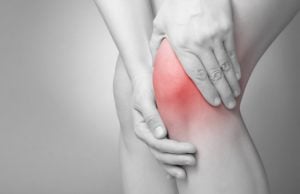 What Is Chondromalacia Patellae?
What Is Chondromalacia Patellae?
Everyone has heard the term ‘Runner’s Knee’, but what exactly is it, and what causes the pain in the front of your knee?
Runner’s Knee is more formally known as Chondromalacia Patellae or Patellofemoral Syndrome.
Chondromalacia Patellae is the break down of cartilage, either over the surface of the patella (knee cap) or the femur (thigh bone). Similar to arthritis, wear and tear causes the cartilage to break down, however the main difference with Chondromalacia is that it is not an ageing process, but rather a change in the integrity (or ‘structure’) of the cartilage from the pressure of load.
Breakdown occurs when the cells within the cartilage (chondrocytes) are damaged. These cells are responsible for producing the proteins that make up the structural scaffold of the cartilage. One of these proteins, known as a proteoglycan, is a negatively charged molecule that attracts water. Higher water content gives cartilage its ability to resist compressive loads. With excessive wear and tear that comes with running, the cartilage wears out and the cells that produce proteoglycans break down, reducing the amount of water content within the cartilage. Reduced retention of water causes the cartilage to essentially dry out, causing the cartilage to soften. Cracks can form in the soften cartilage, which, as they become more severe, can turn into fissures and expose bone. Enough wear and tear and softening of the cartilage can lead to the cartilage cracking away, and eventually resulting in bone-on-bone contact.
What Causes It?
There are many causes of Chondromalacia Patellae. Mainly it is associated with wear and tear, or micro trauma, from activities that required excessive use of the knee, such as running, heavy squatting or frequently walking up and down stairs. Such repetitive loading wears down the knee cartilage.
An abnormally positioned patella is another common cause of Chondromalacia Patellae. Normally, the knee cap (patella) sits perfectly within the groove (known as trochlear groove) at the bottom of the femur (thigh bone) and is kept in place by opposing forces from muscles and soft tissues. Sporty adolescents going through growth spurts often have abnormal pulls and stresses on the knee cap, commonly caused by tighter lateral structures such as the outside of the quadriceps muscle, iliotibial band, or the fibres that support the knee cap and capsule. This causes the patella to subtly track along the outer ridge of the trochlear groove, causing wear and irritation.
Congenital issues can also play a part in abnormal pull on the patella. Being born with a high sitting patella (patella alta), or low sitting (patella baja) affects the tracking and compressive forces of the knee cap in its groove, which can cause increased wear.
Similarly, hip morphology is another common cause of Chondromalacia Patellae. Research suggests that hips which cause the knees to angle or rotate inwards, in turn causes the quadriceps to pull the patella slightly off centre, leading to more wear.
Just as the hip can change the forces of pull at the kneecap, so too can the ankle. Over-pronated feet and congenital conditions which cause arches to collapse are also correlated to chondromalacia development.
Major injuries to the knee can affect alignment, while major surgeries can affect muscle function, also causing tracking issues at the knee.
Lastly, injections of toxic substances into the knee directly affects cartilage integrity. Repetitive high doses of corticosteroids or pain relievers like bupivacaine have been shown to break down surface cartilage causing the onset chondromalacia patellae.
Why Does It Hurt?
Cartilage surrounding the surface of the knee does not have nerve endings, therefore the breakdown of the cartilage normally goes unnoticed. When the body breaks down a structure, like cartilage, there are a number of chemicals released as part of the process. These chemicals sensitise the surrounding area, causing pain in the nerves adjacent to the cartilage.
If you want more information about Chondromalacia patellae, or treatment advice for your knee pain, come and see one of our experienced Sports Physiotherapists at Bend + Mend in Sydney’s CBD.





